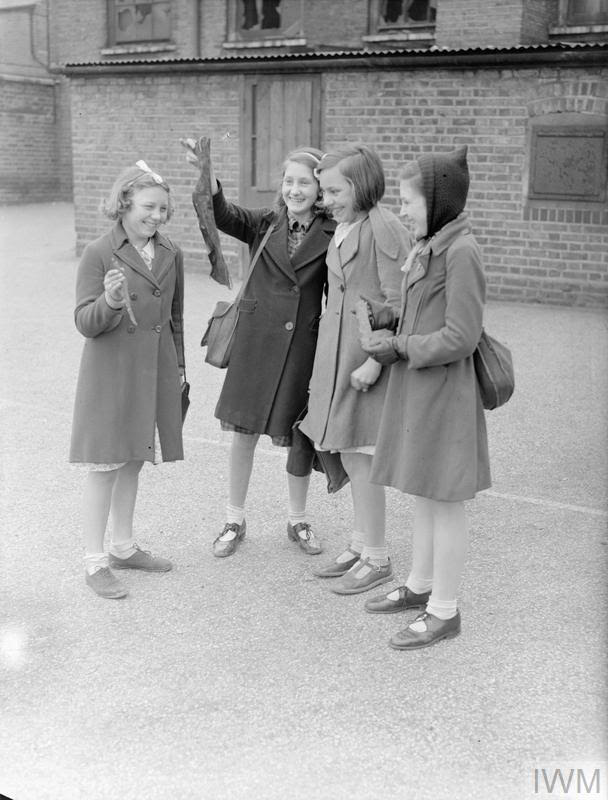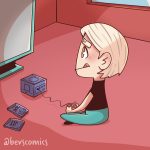During the Second World War, the material worlds and realities of children were transformed entirely, from the everyday spaces they occupied to the objects they encountered on their way to school. Although the Luftwaffe’s aerial bombing campaign destroyed many pre-war fixed playgrounds and precluded opportunities for organised recreation, wartime children persisted in their play, gamifying and incorporating the material culture of war into various playful practices.
Among the various souvenirs of war, the most popular in children’s accounts were shrapnel fragments produced by high-altitude explosions of anti-aircraft shells. The morning after an air raid, the streets were swarmed by magpie-esque children, scouring pavements, gutters, and gardens in search of pieces of warm shining metal. Shrapnel-centred stories recur in memory narratives of wartime childhood. For instance, Bernard Kops recalls the ‘boys of Stepney Green scrubbing around in the debris’ of East London’s docklands following a night of bombing. Children would go to any lengths to retrieve their treasure; Albert Lewish recollects ‘climbing drainpipes to many roofs’ with friends to collect ‘larger and better’ pieces, while Ralph W. Hill recalls Jackie Cockerill riding a tricycle with a large magnet dangling behind in vain hopes to catch any shrapnel prey that may have escaped his hawk-eyed observation. After their hunts, scavengers sorted through their findings, sifting through jagged pieces of iron, cannon cases, shell nose-caps, and sometimes even unexploded bombs in hopes of finding the next crowning exhibit of their collection.

Shrapnel became integral to the lively economic market of the school playground with elaborate networks of alliances, swaps, barter, bribes, theft, and fraud. Akin to other collectables and currencies, shrapnel pieces were relative in value based on aesthetic and sensorial qualities, conferring varying degrees of ‘kudos’ and (playground) market value. Keith Robinson recounts the ‘great rivalry’ among children to obtain warm shrapnel fragments – symbols of having ‘been there’ during the height of an air raid – with some reportedly heating old pieces in the oven before coming into school in efforts to gain optimal ‘kudos’ and maximise market value. Furthermore, while the collection and associated practices involving shrapnel facilitated the rise of playground barons and fraudulent behaviour, it also afforded wartime children a rudimentary way of ‘mastering’ the outside world. Archaeologist, Gabriel Moshenska contends that the collection and ‘domestication’ of shrapnel functioned as a coping mechanism for disenfranchised ‘sub-adults’. Beyond the straightforward fun afforded by shrapnel, by integrating and thus ‘domesticating’ violent objects into various playful practices, children gained a sense of control amid a time where the circumstances of their lives were determined by adults at war and the metal which fell from the sky.
Berry Pillot de Chenecey (she/her) is an MA Public History student at UCL and award-winning graduate from King’s College London where she studied BA Liberal Arts with a Major in History. Berry continues to use children as a category of analysis in her research, particularly in contexts of conflict. Her current research explores the civic instruction of 21st-century British children through public history practices concerning the Second World War. This blog post is based on ongoing research that is currently being developed into an article. You can contact her via email berangere.chenecey.24@ucl.ac.uk






